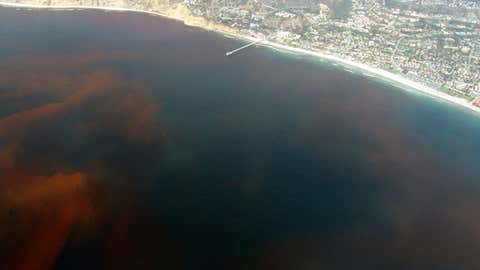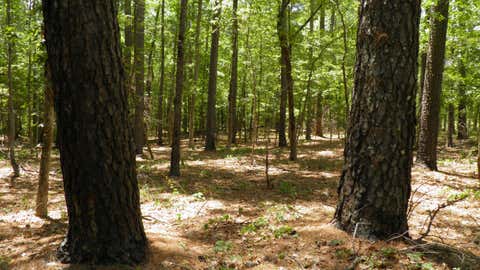We often look at the destruction that comes along with hurricanes and tropical storms – and for good reason – but there are benefits that come along with these storms as well.
Here are five things hurricanes can do that might be beneficial:
(MORE: Facts and Myths About the 'Cone of Uncertainty')
1. Bring Rainfall to Areas That Need It
Tropical cyclones are extremely efficient at rainfall production, and thus, can also be efficient drought busters.
In areas of drought, such as parts of the Southeast and Northeast, rain from a tropical cyclone can be beneficial.
Moisture from decaying tropical cyclones in the eastern Pacific occasionally gets caught up in the west-to-east flow of the United States and reaches the Desert Southwest. California and much of the Desert Southwest are desperate for rain, so an influx of moisture from a tropical system could be good news for that region.
Of course, often tropical cyclone rain is "too much of a good thing" for any drought area.
Tropical Storm Debby in 2012 erased a drought in the Deep South, but also triggered major inland flooding in those same drought areas of north Florida and south Georgia.

2. Break Up Bacteria and Red Tide
As tropical cyclones move across the ocean, winds and waves toss the water's contents. This mixing breaks up patches of bacteria that lurk in the water and can bring an earlier end to the red tide, which can occur along the Gulf Coast and the West Coast.
Winds can also oxygenate the near surface waters, helping return life to areas where the red tide once existed.

3. Provide a Global Heat Balance
One of the main purposes for hurricanes around the globe is a temperature balance between the poles and the equator.
This imbalance of temperatures will always exist due to the orientation of the polar axis of our planet. Earth’s equator receives more solar energy, called insolation, than any other latitude on a yearly average. This insolation warms the ocean temperature, which in turn warms the air above it and keeps it warmer long into the autumn.
The Earth is always trying to spread this warm wealth around the world, and hurricanes are one of the ways this is done. Mid-latitude storm systems and oceanic currents are others.
Hurricanes, due to their size and interactions with the upper levels of the atmosphere, are very efficient movers of equatorial heat.
The equator would be considerably warmer and the poles could be significantly cooler if tropical cyclones did not exist.
Earlier this year, Blas used the warm waters of the eastern Pacific to become a major hurricane and produce very heavy rainfall far from land. After the storm passed, it left cooler water behind.
This oceanic heat is not simply extinguished after being removed from the ocean – it is slowly wrung out in thunderstorms as hurricanes move poleward. The cold water left behind in hurricanes can weaken new hurricanes that pass over that same area.

4. Replenish Barrier Islands
Although most images we see of barrier islands after hurricanes show beaten-up swaths of land, barrier islands often get replenished as a hurricane moves through.
Hurricanes have the power to pick up substantial amounts of sand, nutrients and sediment on the ocean’s bottom and bring it toward those barrier islands. Storm surge, wind and waves will often move these islands closer to the mainland as sand is pushed or pulled in that direction.
Without tropical cyclones or artificial restoration, barrier islands would eventually shrink and sink into the ocean.

Hurricanes can do immense barrier island damage, as Charley did in 2004, but even that storm brought some beneficial sand to the coast.
5. Replenish Inland Plant Life
What isn’t blown around on the ground during a hurricane can sometimes be carried hundreds of miles downstream.
As hurricanes make landfall, their wind blows spores and seeds further inland from where they would normally fall; this effect can be seen a thousand miles inland as storms move away from the shoreline. These seeds can replenish lost growth after fires and urbanization.
Tropical systems often thin out tree foliage, which can be beneficial in firefighting efforts. The act of pruning trees as to mitigate damage can also help.
One study said that the loss of foliage in hurricanes and other natural disasters aids long-distance seed dispersal.
Fresh nutrients and sediment brought in by hurricanes can spawn growth spurts in new plant life, which can later lead to upticks in animal life.




